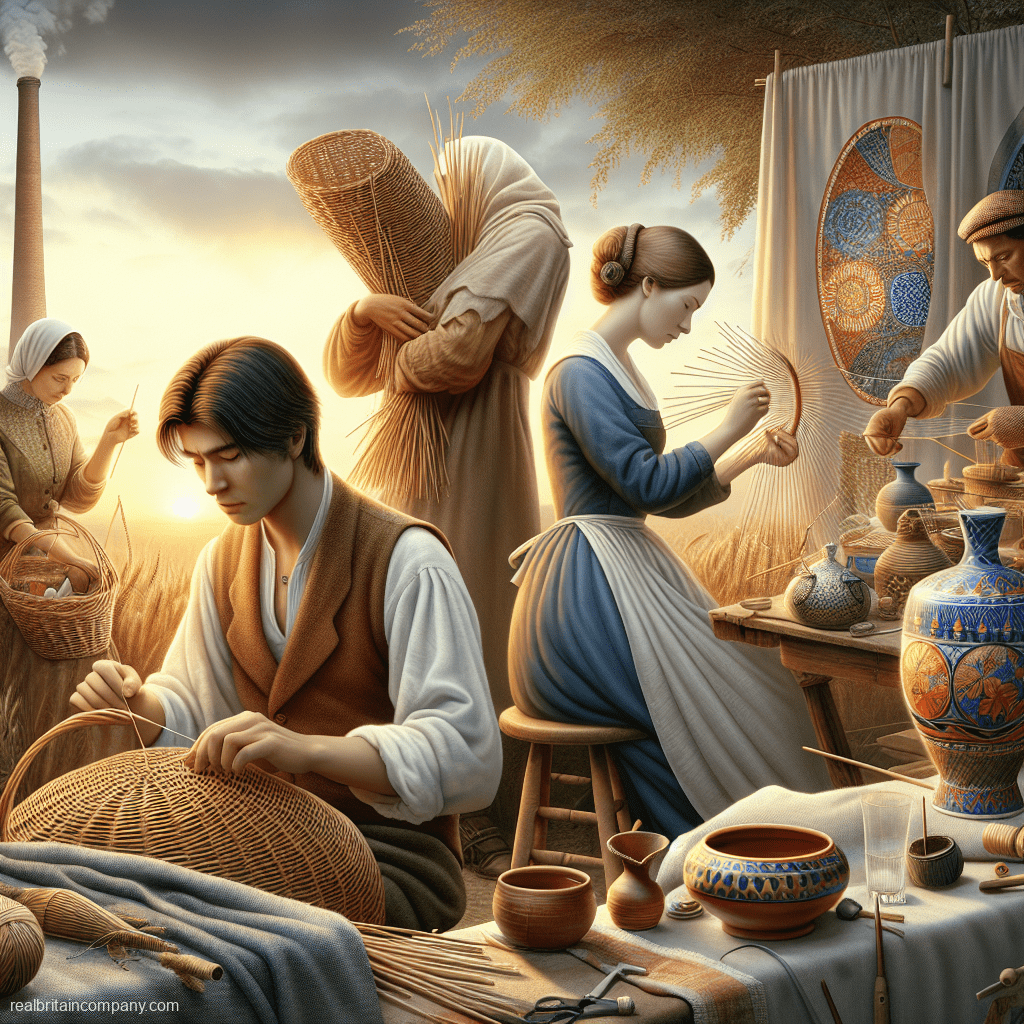

Ah, the charm of the British Isles! Think rolling green hills, historical landmarks, the Queen’s shows and, of course, the traditional crafts that tell the tales of yesteryears. Britain’s crafts have a rich heritage, often imbued with the humour, ingenuity, and painstaking effort of its artisans.
As you embark on this charming peregrination, prepare yourself for a hearty guffaw, a few raised eyebrows, and a whole lot of British tradition. So, grab a cuppa and settle in because this journey through time is as British as a scone at high tea.
First on our tour is the intricate and utterly time-consuming art of lace making. Lace was akin to gold back in the days when Queen Elizabeth I herself was a great patron. Today, the tradition holds strong—most prominently in places like Honiton and Devon. These regions boast of the famous Honiton lace, symbolising the pinnacle of needlework artistry.
Often called ‘The Potteries,’ Stoke-on-Trent isn’t just another dot on the map; it’s a veritable cornucopia of earthen treasures. Porcelain, ceramics, and earthenware from here have donned Royal tables and regular homes alike.
Did you know?
You can still hear the whispers of past artisans as you watch a lump of clay transform into a work of sheer magnificence.
Moving northwards, we land in the industrious town of Sheffield, celebrated for its superior steel and silversmithing. Sheffield became synonymous with cutlery and fine silver objects from the 18th century onwards.
What’s quite amusing? In the 19th century, Sheffield produced "Brigadier" buttons for military uniforms, which can still be found in some collectors’ markets today!
If you flatter yourself with a penchant for the luxurious, Scottish tartan and tweed will be right up your alley. The delicate yet hardy fabrics have clothed Scots and the British upper crust alike. Did you know Scotland’s Harris Tweed has such stringent authenticity rules that it’s woven in people’s homes rather than factories?
Statistically speaking, around a staggering 100,000 metres of Harris Tweed are still made annually. Take that, modern machinery!
Imagine sifting through soil and rock, eyes gleaming at the sight of a potential treasure. Cornish tin mining was a booming trade in the 19th century, and it has beautifully morphed into a sophisticated craft of jewellery making.
Did you know?
Scotland’s Highland Games bring a tumultuous, riotous splash of culture, and no traditional craft journey would be complete without it. Picture gigantic men tossing colossal logs (called cabers) as if they’re mere matchsticks. While it might seem an antithesis to the delicate craftsmanship discussed earlier, it’s a craft of physical prowess, dating back to the 11th century.
And so, dear reader, we’ve traipsed across England, Scotland, and beyond, marvelling at the traditional British crafts that continue to thrive despite the march of time. From the fine intricacies of Honiton lace to the robust craft of Scottish tweed, every nook and cranny of Britain has its unique story, immortalized through its traditional craftsmanship.
Let this journey inspire your travels and perhaps even stoke (no pun intended) a newfound appreciation for the artisans who dedicate their lives to these age-old crafts.
So, what traditional British craft has piqued your curiosity? Share your thoughts and let’s get chatting in the comments below!
